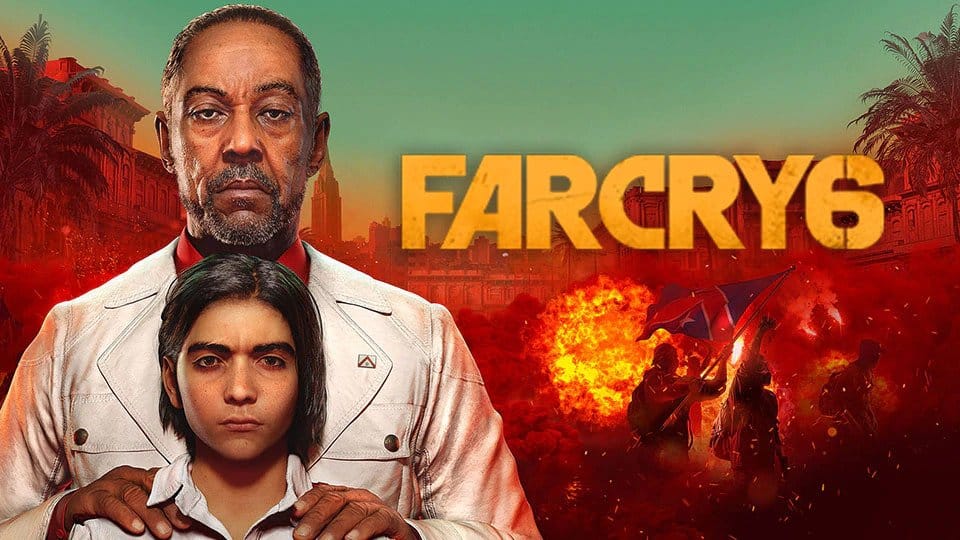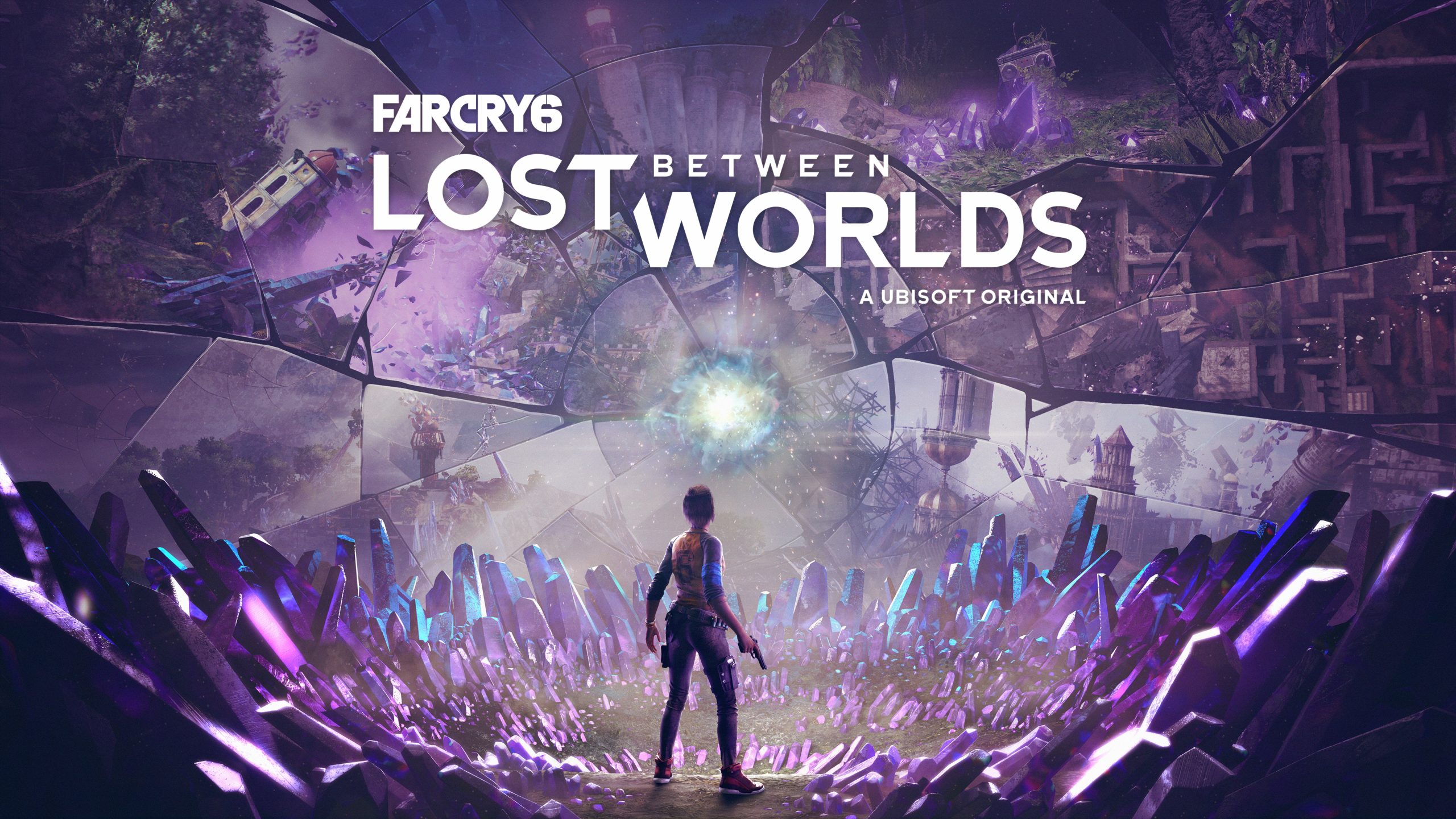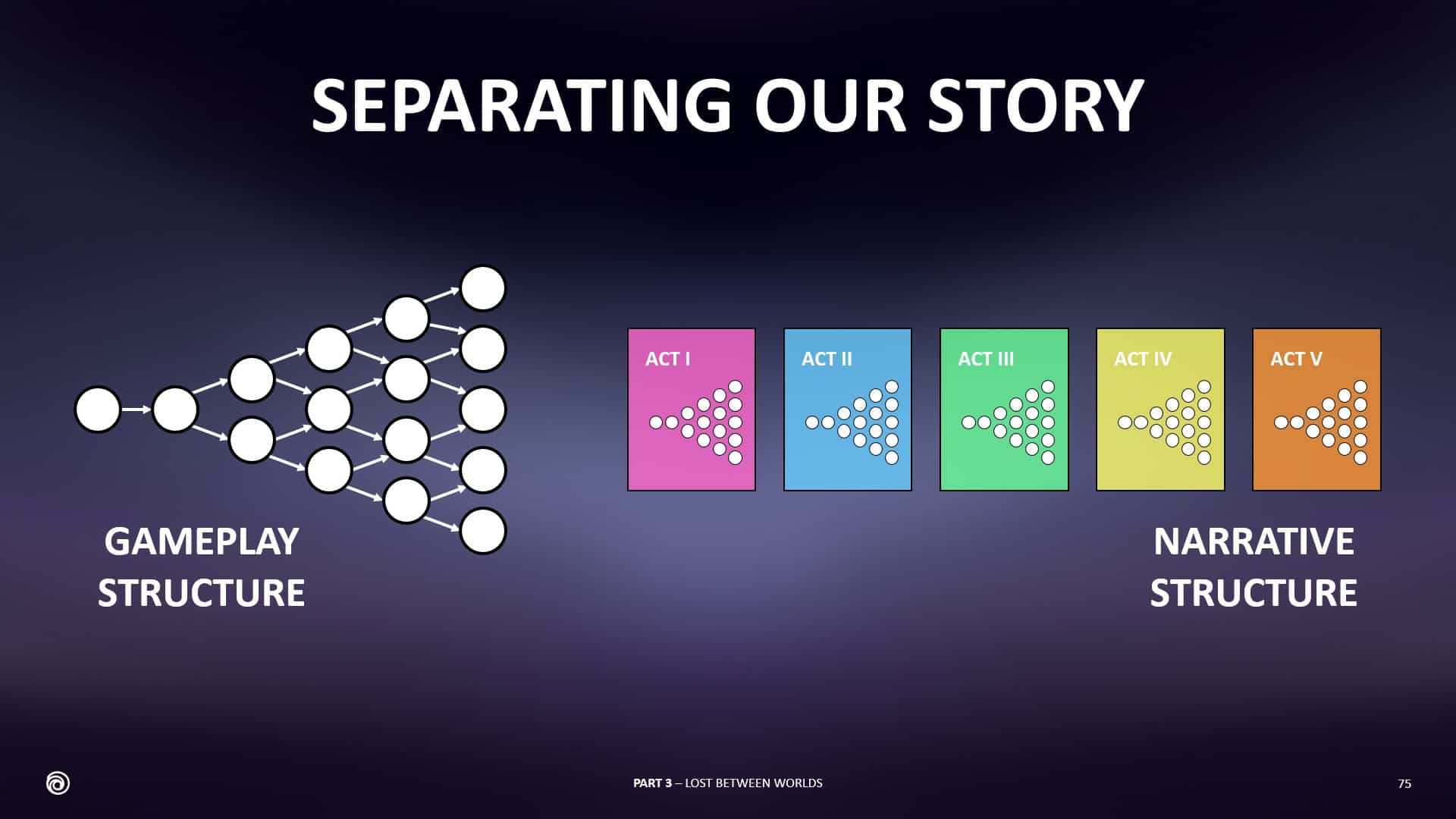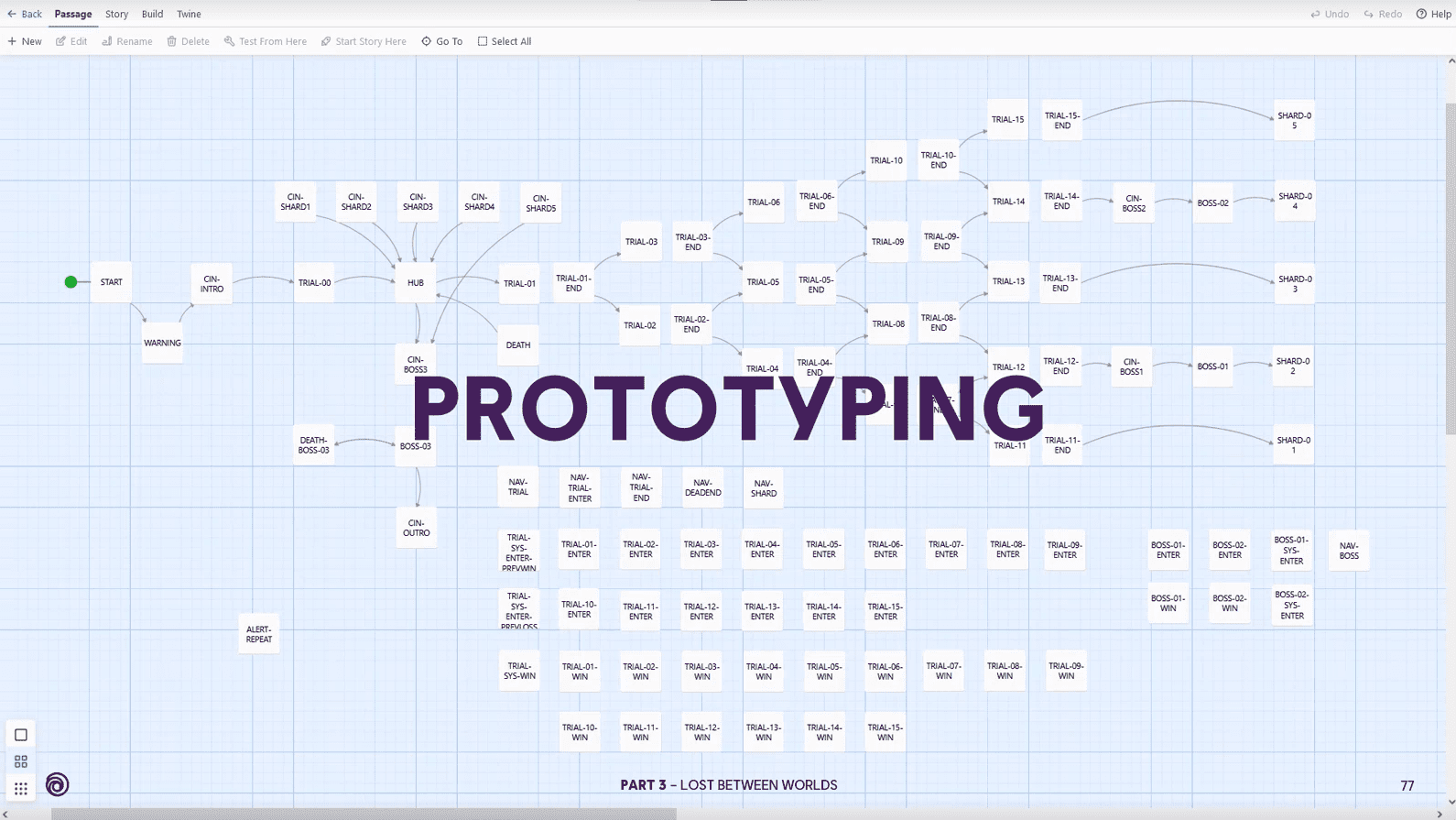Writing compelling narratives around gameplay constraints is a challenge that requires just as much creative storytelling as it does technical problem-solving.
Over the course of six years, Lead Writer Heli Kennedy and Narrative Designer Brendan Hennessy have had their fair share of both, from writing for the “play as anyone” mechanic in Watch Dogs: Legion, to juggling characters and plot development in the context of revolution in Far Cry 6, to designing a re-playable story structure for its most recent expansion “Lost Between Worlds.”
They shared the techniques and solutions to the challenges they’ve faced in developing complex AAA-scale narratives at the 2023 Game Developers Conference (GDC) in San Francisco.
Get the full recap on how Watch Dogs: Legion told a story without a main character and how the team found new ways to tell stories in Far Cry 6 and Lost Between Worlds. Or read on for some of our key takeaways:

Watch Dogs Legion
Challenge 1: How do you write a compelling narrative when there is no set protagonist?
Watch Dogs: Legion, an open world hacker playground and third installment to the Watch Dogs franchise, introduced the innovative “Play-As-Anyone” gameplay system.
This means that players can recruit and play any character from the game’s entire population. These “generated characters” have various backstories, abilities, gadgets and perks, allowing players to build a unique team and play their way.
This also means that it becomes rather difficult to write a story where you no longer have a traditional main character, and instead have a team of interchangeable characters with various identities.

Solution 1: Ground them with an anchor!
The solution to this complex challenge was creating “anchor characters” — authored allies and villains that remain constant throughout the game. These “anchor characters” add much-needed continuity to the cast of temporary recruitable “generated characters.” In addition, “generated characters” could also have opinions about “anchor characters” and both serve to drive the story forward.
Challenge 2: How do you add depth while differentiating between “generated characters?”
Creating an individual purpose narrative purpose and backstory for thousands of “generated characters” would be unrealistic. Not to mention, the cost of recording thousands of dialogue lines would be astronomical.

Solution 2: Text it!
To combat such a challenge, the team thought critically about how to include huge amounts of character information into gameplay. The answer was text.
Scanning a character would bring up a profile that captured each character’s backstory at a quick glance. This included demographic information like their name, age, occupation, and even an interesting fact or two.
“We specifically designed these lines to be fun and weird. We really wanted the specific details to stick in the player’s mind and colour the persona,” says Brendan.
Challenge 3: How does the team tackle working on a massive story without the result feeling like a patchwork by various authors?
Typically, Ubisoft games are written in big chunks. An open world map is developed, and sections are delegated to individual writers, each focusing on their potion of the map. However, with such a dynamic narrative like Watch Dogs: Legion, a change was needed not only to what was being written but also how.

Solution 3: Divide and conquer!
Team ownership was split in two overlapping ways, by missions and personas.
Mission writers first outline a linear version of the script. This is sent out to persona writers who would fill in the script with 20-character variations. The edited variations would be sent back to the mission writers who would review and revisit them to ensure they met the original intention.
This system meant that every writer was involved in every character and every mission in the game, even in those they did not own directly. The result was a whole team of people who were intimately familiar with the content and could fill in if a writer ever became unavailable. It also grounded consistency in the game, which was especially helpful during the long development cycle.

Far Cry 6: Fight for freedom!
Challenge 1: How do we make players see and feel the revolution throughout the game?
The narrative team faced several challenges in rolling out the storyline, one of which was the size of the open world. It was huge. In addition to the characters, the world itself had to tell the story of a revolution taking place. There had to be a representation of torment and turmoil, which need to be woven into the environments and characters the player could encounter.
Solution 1: Section it off!
The map was divided into five sections. Each region is designed with a distinct theme and tied to a story arc, where players would meet allies and antagonists driving the main storyline. But to make it more realistic, there are also optional open-world missions, and progression triggered side-quests that show the nation’s citizens facing the revolution and its impact. These quests serve to loop the guerrilla movement and its impact back into the story. Showcasing the revolution in missions, citizens, and the environment.
Challenge 2: How do we keep the antagonist in the story if he has little to no contact with the protagonist?
It wouldn’t be believable to have Anton bump into Dani on the street or chase them down when they aren’t a major threat to his presidency. Getting these characters to collide in an open world that is as large as Yara was often a challenge. How do you develop narratives and storylines of two distinctly different characters and converge them into each other?
Solution 2: First Person to Third Person
The team altered the traditional Far Cry cinematic language. Whereas, previous games were shot from a first-person perspective, Far Cry 6 was shot from a third person perspective with the addition of a talking protagonist (Far Cry 5’s player characters didn’t speak in scenes). As a result, it opened the door for cinematic devices such as cutaways, allowing for the storyline to occasionally shift over to President Castillo.
Now players were able to pose as a fly on the wall and perceive Anton’s reaction to something Dani had done elsewhere in the country and see how they impacted the president through cinematic sequences after completing missions — a solution to bridge both sides of a story in a massive world and bring the characters closer.

Far Cry 6: Lost Between Worlds
Challenge 1: How to structure a gameplay story arc that can be played in any order?
As an expansion, Lost Between Worlds introduces a new gameplay style for Far Cry while also brining about its very own challenges for developers and writers. The DLC entered a brand-new genre for the Far Cry franchise and set a very different tone than the main campaign. This is not an open world game, rather a roguelite-inspired game that the player can explore in any order over the course of multiple runs. With this gameplay structure, the narrative team had the challenge of developing a framework which would align with gameplay aspects.

Solution 1: Storybook it!
It was clear that the narrative couldn’t be propelled by mission objectives like it typically is in open world games. Instead, a new framework was developed based on a kid’s storybook. Now, why a kid’s picture book?
“They’re defined by constant plot movement, and they use page turns to push the story forward.” explained Heli.
This was translated into the game by making use of cinematics as page turns. The story was structured in five acts, and each time the player came out of the levels, a cinematic would move the story forward like a picture book. Every cinematic would contribute to a character arc that focused on the theme of being human and learning from experience.
Challenge 2: Will it flow?
Lost Between Worlds established self-contained levels which connected in a big branching structure. A player could explore these in any order over the course of multiple runs. Now the challenge arose, how would a narrative structure flow if players could start from anywhere?

Solution 2: Testing, testing, 1, 2, 3…
The answer was having pools of dialogue for each story act which trigger within any level regardless of gameplay. The team then built a Twine prototype, which enabled them to play through this interactive example, giving them the opportunity to check the narrative flow and make adjustments.
By separating narrative from its dependencies, including gameplay and level design, the team successfully navigated potential obstacles that could have impacted progress in both areas. As a result, this enabled them to test the build with real voices and confirm a cohesive and smooth flowing narrative very early into production, through the game itself was still in development.
Throughout this talk, Heli and Brendan were able to provide audience members at GDC with a few core takeaways when writing within various types of gameplays.
- Pick moments to find authored anchored points to hold together your story in open gameplay like the Castillo cinematics in Far Cry 6, storybook page turns in Lost Between Worlds or recruitment missions in Watch Dogs Legion.
- Find ways to develop characters that do not rely on linear plot arcs as much as possible. Having world story and regions built on themes in Far Cry 6, context provided by the profiler in Watch Dogs: Legion, and buckets of reusable content in Lost Between Worlds, helped to build coherent stories when gameplay didn’t support linear experiences.
- Make sure your approach matches the scale and scope of the game you’re making. Know when you want to and can give the player an intimate storybook narrative, or when you want to sweep them along on an epic. Structure your team accordingly to the content and the scale (Just as a failsafe).
